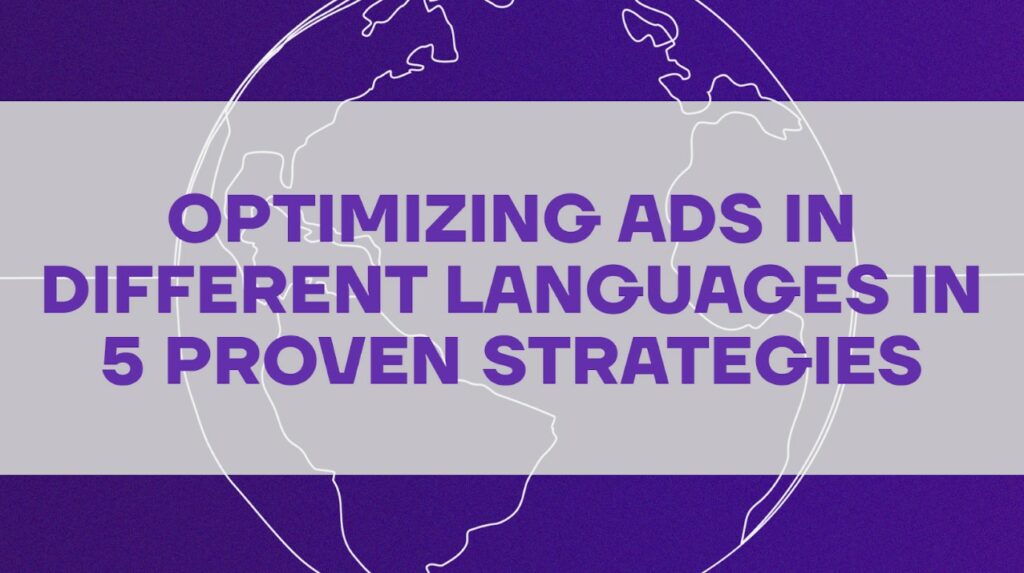Do you know how much revenue you’re losing out by neglecting to optimize your Amazon ads in different languages? Imagine the untapped opportunities and revenue growth you’re missing out on by not targeting diverse global markets.
With the increasing globalization of eCommerce, expanding your advertising efforts to different languages is no longer a luxury but a necessity for sustainable business growth.
This blog post will give you 5 Strategies for Optimizing Ads in Different Languages: Boost Global Reach and Maximize Ad Performance.
So let’s discover how to maximize your ads’ potential in different languages for exceptional results.
Table of Contents
- Why You Should Expand Advertising Efforts To Different Languages
- Strategy 1: Conduct In-Depth Market Research
- Strategy 2: Localization of Keywords & Ad Copy
- Strategy 3: Leverage Language-Specific Tools & Resources
- Strategy 4: Optimize Product Listings For Language-Specific SEO
- Strategy 5: Implement Targeted Advertising Campaigns
- Introducing MarginBusiness: Your Trusted Partner for Amazon Listing Localization & Translation Services
- Conclusion
Why You Should Expand Advertising Efforts To Different Languages
This is not merely a choice; it’s a strategic imperative for businesses seeking sustainable growth in the fiercely competitive eCommerce landscape. By limiting your ads to a single language, you’re inadvertently neglecting a significant portion of potential customers who may be browsing Amazon in their native tongue.
Consider this: there are over 7,000 languages spoken worldwide, and each language represents a unique market with its own cultural nuances, preferences, and consumer behaviors.
| Market | Market Size | Market Growth | Competitive Landscape |
| United States | 193.7 million active customers | 17% | Highly competitive |
| United Kingdom | 30.7 million active customers | 12% | Moderately competitive |
| Japan | 15.3 million active customers | 10% | Highly competitive |
| Germany | 20.3 million active customers | 11% | Moderately competitive |
| Canada | 10.0 million active customers | 10% | Moderately competitive |
| France | 10.1 million active customers | 9% | Moderately competitive |
By optimizing your ads in different languages, you gain the power to connect with these diverse audiences, effectively multiplying your customer reach and revenue potential.
It’s an opportunity to tap into untapped markets, penetrate new demographics, and establish a strong global presence.
Embrace language optimization to position your brand as inclusive, customer-centric, and adaptable, setting the stage for exponential growth in the increasingly interconnected world of eCommerce.
The Challenges And Opportunities Of Targeting Diverse Markets

While targeting diverse markets through language optimization is undoubtedly enticing, it comes with challenges and opportunities. But the challenges lie in understanding and adapting to the cultural nuances, preferences, and consumer behaviors specific to each target language.
Translating your ads word-for-word simply won’t cut it; you must tailor your messaging to resonate with the local audience, incorporating dialects, idioms, and cultural references that strike a chord with them.
Additionally, conducting in-depth market research to uncover market trends, competitor landscapes, and consumer insights in each target language is vital for effective targeting.
On the other hand, the opportunities presented by targeting diverse markets are immense. By expanding into new markets, you can tap into previously untapped customer segments and unlock a whole new revenue stream.
Each market brings unique opportunities, such as high-demand product categories, lower competition, or specific cultural events and holidays that can be leveraged for targeted advertising campaigns.
Moreover, targeting diverse markets allows you to diversify your risk and reduce dependency on a single market, making your business more resilient in the face of economic fluctuations or industry challenges.
Finally, it’s an opportunity to grow your customer base and establish your brand as a global player with a broad and loyal customer following.
Strategy 1: Conduct In-Depth Market Research
Understand The Cultural Nuances & Preferences Of The Target Audience
When venturing into advertising in different languages on Amazon, it is crucial to understand your target audience’s cultural nuances and preferences.
Cultural factors heavily influence consumer behavior, purchasing decisions, and communication styles. To gain this understanding, immerse yourself in the local culture by conducting thorough research, engaging with native speakers, and exploring online forums or social media groups.
Pay attention to cultural norms, values, and sensitivities that may impact your messaging and creative content. This way, you demonstrate respect, build trust, and increase the likelihood of engaging them effectively.
Identifying Key Competitors In The Local Market
To gain a competitive edge and refine your advertising strategies in different languages, it is crucial to identify and analyze key competitors in the local market.
Research the landscape to understand who your direct and indirect competitors are, how they position their products, and the tactics they employ to capture the attention of the target audience.
Study their product listings, ad copy, pricing strategies, and customer reviews. This way, you gain insights into successful approaches, identify market gaps, and effectively differentiate your ads. Keep a pulse on competitor activity and constantly monitor changes and trends to stay ahead of the game.
Analyzing Consumer Behavior & Trends In The Target Language

To maximize the effectiveness of your Amazon ads in different languages, a thorough analysis of consumer behavior and trends in the target language is essential.
Dive into market research tools, analytics, and reports to gain insights into your target audience’s purchasing habits, preferences, and browsing patterns. Identify popular keywords, search queries, and trending topics in the target language to tailor your ad content and product listings accordingly.
Stay updated on market trends, emerging consumer needs, and local events that might influence consumer behavior. This way, you can optimize your ads to resonate with their desires, pain points, and aspirations, ultimately driving higher engagement and conversions.
Here are 4 actionable tips:
- Leverage language-specific keyword research tools: Use tools like Google Trends, SEMrush, or Amazon’s own keyword research tools for each target language. Identify relevant keywords, search volume, and trends to optimize your ads and increase visibility.
- Engage native-speaking professionals: Work with native-speaking copywriters and translators who deeply understand the local language, culture, and preferences. Their expertise will ensure accurate and culturally appropriate messaging that resonates with the target audience.
- Utilize localization services: Consider employing localization services to ensure accurate translations of your product listings, ad copy, and keywords. Localization goes beyond translation, adapting content to cultural nuances and preferences, resulting in more effective communication.
- Monitor and adapt: Continuously monitor and analyze the performance of your ads in different languages. Track metrics like click-through rates, conversion rates, and customer feedback. Identify patterns and make data-driven optimizations to improve campaign effectiveness over time.
Strategy 2: Localization of Keywords & Ad Copy
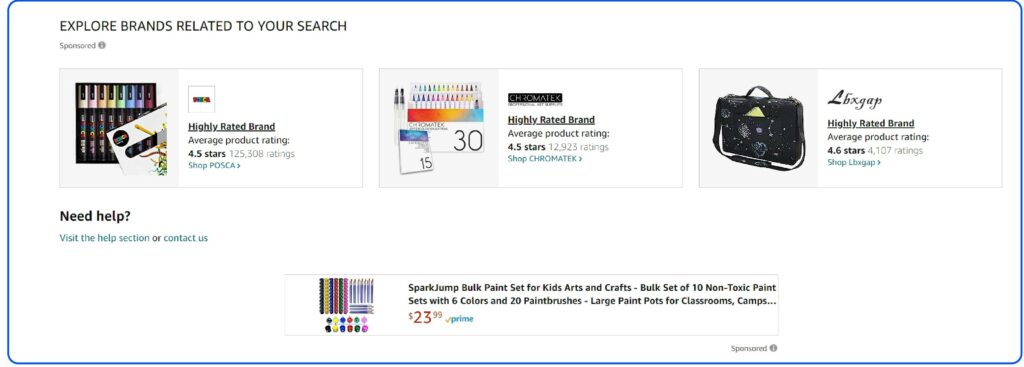

Translating & Adapting Keywords For The Target Language
This is not sufficient when localizing your Amazon ads for different languages. First, it’s important to understand that language nuances and search behavior can vary significantly across cultures.
For instance, while the English keyword “running shoes” might be popular in the United States, the equivalent in French could be “chaussures de course” or “baskets de course.”
To adapt keywords effectively, utilize keyword research tools specific to the target language. Tools like Google Keyword Planner, SEMrush, or local language-specific tools provide valuable insights into local customers’ search terms and phrases.
Additionally, analyze the top-ranking competitors’ keywords in the local market to identify trends and optimize your keyword selection accordingly. By doing so, you increase the visibility and discoverability of your products within the specific market, driving targeted traffic and potential conversions.
Customizing Ad Copy To Resonate With The Local Audience
![[Example of Skincare ads in Japan & Brazil "mochi-hada" & "bronzeado perfeito"]](https://eva.guru/wp-content/uploads/2023/06/heres-a-screenshot-of-skincare-ads-in-japan-brazill_2-1024x517.jpg)
To truly resonate with the local audience, it’s crucial to customize your ad copy beyond translation. Craft compelling and persuasive messaging that addresses the target audience’s unique needs, aspirations, and pain points in their language.
For instance, if you are advertising skincare products, understand the specific concerns or desires of the local market. In Japan, you might highlight the importance of achieving “mochi-hada” (soft and supple skin), while in Brazil, you might focus on achieving a “bronzeado perfeito” (perfect tan) for beachgoers.
Utilize your market research to identify cultural nuances, preferences, and unique selling points that can be integrated into your ad copy. Highlight the benefits and features that are particularly appealing to the local audience.

Use persuasive language that aligns with their values and desires. Testimonials or reviews from local customers can also add credibility and social proof. This way, you establish credibility, trust, and relevance, increasing the likelihood of conversions and brand loyalty.
Utilizing Localized Dialects, Idioms & Cultural References
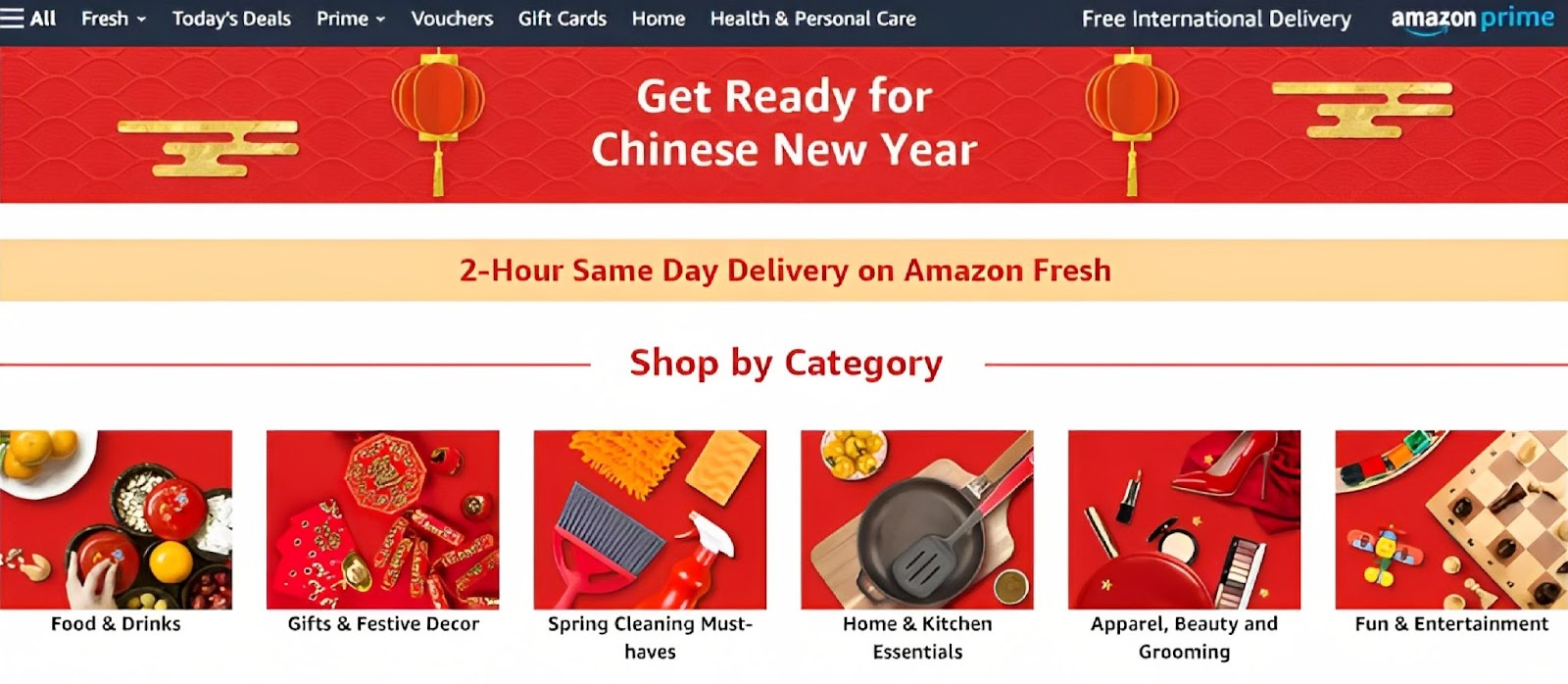
To create a truly authentic and engaging experience for the local audience, go beyond mere translation and incorporate localized dialects, idioms, and cultural references into your Amazon ad copy. These elements demonstrate your understanding and respect for their culture and make your ads feel more relatable and familiar.
For example, if you’re targeting the Spanish speaking market, consider using idiomatic expressions like “lo último en moda” (the latest in fashion) or “¡Aprovecha esta oferta de ensueño!” (Take advantage of this dream offer).
Additionally, leverage cultural references that resonate with the local audience. For instance, if targeting the Chinese market, referencing popular holidays like the Lunar New Year or using Chinese zodiac symbols can help create a sense of cultural connection.
Research and consult with native speakers or localization experts to ensure accurate usage of dialects, idiomatic expressions, and culturally significant references. They can provide valuable insights into the cultural context and help you avoid any potential pitfalls or misinterpretations.
Strategy 3: Leverage Language-Specific Tools & Resources
Leveraging Localization Services For Accurate Translations
Accurate translation is paramount when running Amazon ads in different languages. While automated translation tools can provide a basic understanding, they often fail to capture the nuances and cultural context necessary for compelling ad copy.
Leveraging professional localization services like MarginBusiness ensures accurate translations that resonate with the local audience. Localization experts have a deep understanding of the target language, cultural references, and regional variations.
They adapt your ad content, product descriptions, and keywords to align with the local culture, idiomatic expressions, and preferences.
Investing in localization services ensures that your messaging effectively communicates the value of your products, builds trust with your target audience, and enhances the overall user experience.
Employing Native-Speaking Copywriters & Translators
When aiming for optimal results in different languages, employing native-speaking copywriters and translators is highly beneficial. Native speakers possess an inherent understanding of the language, cultural nuances, and local market dynamics.
They can craft ad copy that feels natural and resonates with the target audience, resulting in higher engagement and conversions. Collaborate closely with native-speaking professionals to provide them with comprehensive brand guidelines, detailed product information, and clear objectives.
Encourage open communication to address any questions or concerns they may have. This way, you can ensure that your ads convey the intended message accurately and effectively connect with the local audience.
Strategy 4: Optimize Product Listings For Language-Specific SEO
Conducting Comprehensive Keyword Research For The Target Language
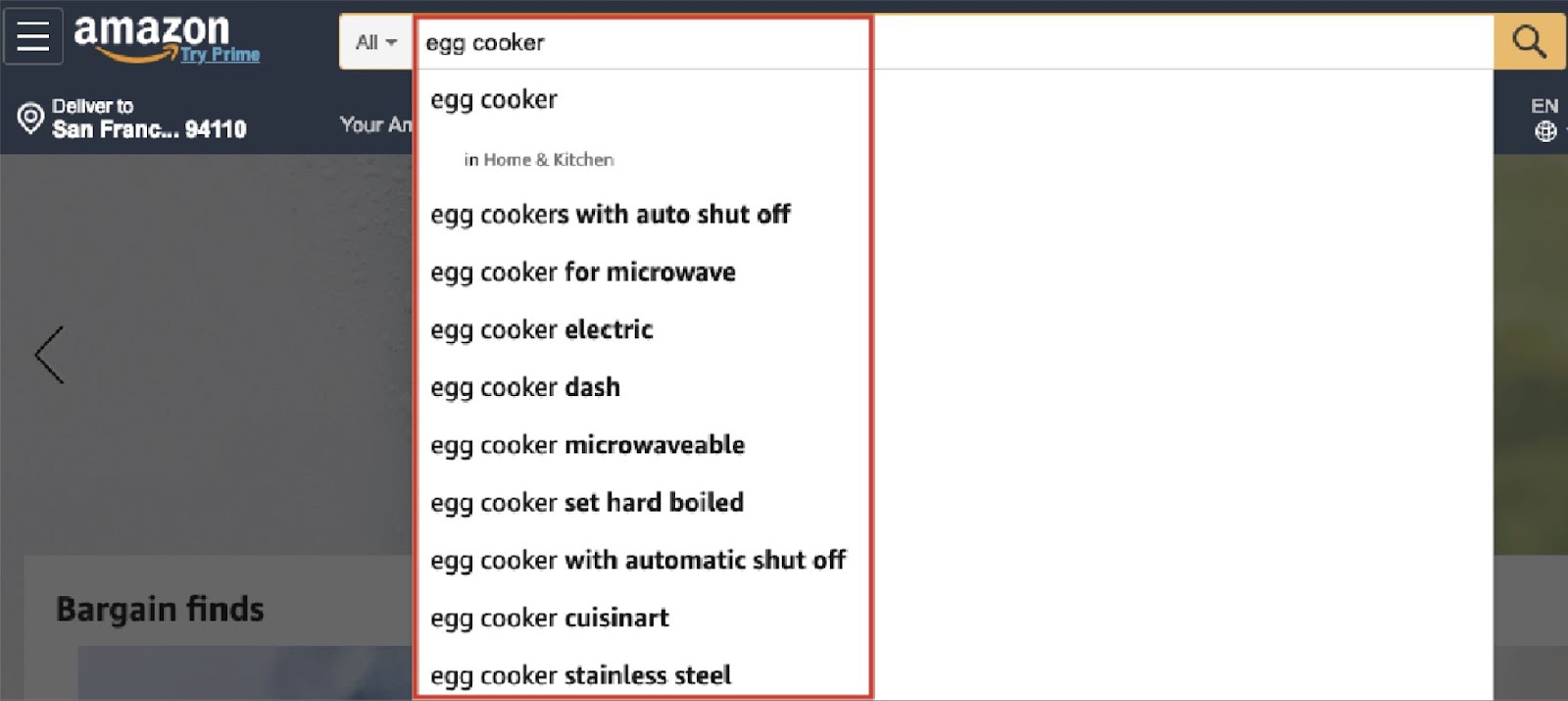
Comprehensive keyword research is essential to optimize your Amazon product listings for language-specific SEO. Start using language-specific keyword research tools like Amazon’s Autosuggest, Google Keyword Planner, or local market-specific tools to find relevant keywords in the target language.
These tools provide valuable insights into the search volume, competition level, and variations of keywords specific to your target audience.
Additionally, take advantage of Amazon’s search suggestions and auto-complete feature, which can reveal commonly searched terms in the target language.
Analyze competitor listings in the target language and observe the keywords they are using to gain further insights. This way, you can tailor your product listings to align with their search behavior and improve your visibility in search results.
Example: If you are selling fitness equipment and targeting the German market, conducting keyword research may reveal popular terms such as “Fitnessgeräte” (fitness equipment), “Hanteln” (dumbbells), or “Yogamatte” (yoga mat). Incorporating these keywords strategically in your listings can help you reach your target audience effectively.
Incorporating Relevant Keywords In Your Listing
Once you have identified the relevant keywords, strategically incorporating them throughout your product listings is essential.
Start with your product title, which carries significant weight in search rankings. Place the most important and high-converting keywords towards the beginning of the title to maximize visibility and click-through rates.
For example, if you are selling organic skincare products and targeting the French market, consider a title like “Produits de soins de la peau bio – Hydratant naturel pour une peau éclatante“ (Organic skincare products – Natural moisturizer for radiant skin).
In addition to the title, optimize your bullet points and descriptions by incorporating the identified keywords naturally. Ensure the content remains informative, engaging, and persuasive to potential customers.
Avoid keyword stuffing, as it can negatively impact your listings’ readability and user experience. Instead, focus on creating compelling copy that showcases your product’s features, benefits, and unique selling points, while naturally incorporating relevant keywords.
Use Language-Specific SEO Techniques To Improve Visibility & Ranking
To further enhance your language-specific SEO efforts, consider the following techniques:
- Localize your content: When optimizing your product listings for different languages, it’s essential to adapt your content to reflect the cultural nuances, idioms, and expressions of the target language.
This localization improves the user experience and signals to search engines that your listing is relevant to local customers. For instance, if you target the Japanese market, ensure your content reflects local preferences, customs, and terminology.
- Pay attention to grammar and syntax: In language-specific SEO, proper grammar and syntax are crucial. Ensure that your product listings are grammatically correct and follow the proper syntax of the target language.
Poor grammar or awkward phrasing can affect the user experience and your search engine rankings. If needed, consider working with professional translators or copywriters who have a strong command of the target language.
- Utilize language-specific backend search terms: Amazon provides backend search term fields where you can include additional relevant keywords in the target language.
Although these backend search terms are not visible to customers, they play a role in improving your product’s visibility in search results. Utilize this space to include variations, synonyms, and related terms in the target language relevant to your product.
- Optimize for local search trends: Stay informed about local search trends in the target language. Monitor news, events, and cultural shifts that may impact consumer behavior and search patterns.
Incorporate keywords related to current events, seasonal trends, or popular topics in the target language to increase the chances of being discovered by potential customers. Stay adaptable and update your listings accordingly to capitalize on these opportunities.
Strategy 5: Implement Targeted Advertising Campaigns
Utilizing Language-Specific Amazon Advertising Campaigns
When implementing targeted advertising campaigns on Amazon, leveraging language-specific campaigns can significantly enhance your reach and effectiveness. By creating separate campaigns for each language, you can optimize your ad messaging, keywords, and product targeting to resonate with your target audience’s linguistic and cultural preferences.
To start:
- Conduct keyword research specific to each language to identify the most relevant and high-converting keywords.
- Tailor your ad copy to align with the language and cultural nuances of the target audience.
- Consider employing native-speaking copywriters or translators to ensure the authenticity and fluency of your ad content.
Example: If you’re selling home decor products and want to target French-speaking customers, create a dedicated Amazon Advertising campaign exclusively for the French language. Use French keywords, ad copy, and localized product targeting to align with the needs and expectations of the French-speaking audience.
Segmenting Ad Campaigns Based On Language & Region
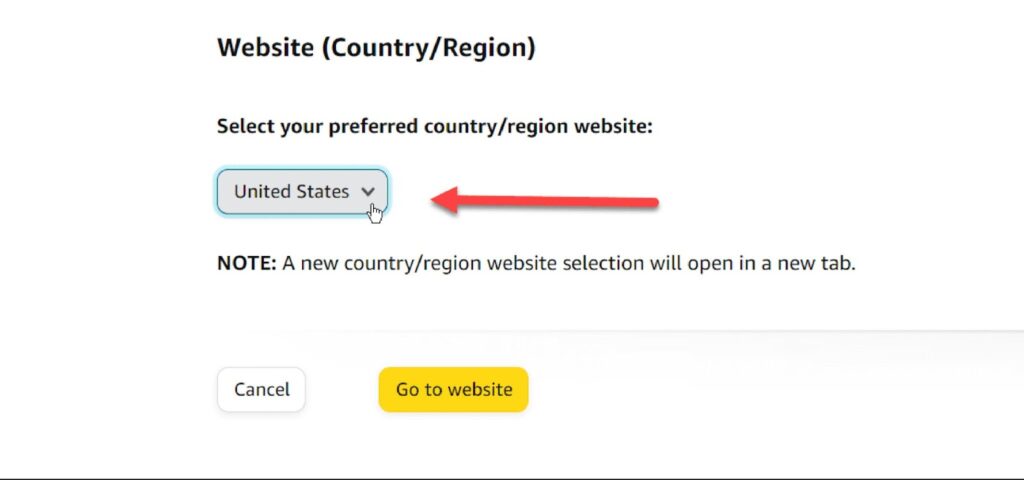
Segmenting your ad campaigns based on language and region allows you to fine-tune your targeting and deliver more relevant ads to specific customer segments.
Consider the languages spoken in different regions and the preferences of the local audience. By creating separate campaigns for each language and region combination, you can customize your messaging and targeting to match the unique characteristics of each segment.
For instance, if you’re running campaigns for fashion products and targeting the Italian market, segment your campaigns based on regions within Italy (such as North, South, and Central) and create language-specific ad groups within each region.
This level of segmentation enables you to adapt your messaging, keywords, and targeting based on regional preferences, dialects, and cultural nuances.
Customizing Bidding Strategies & Ad Placements For Maximum Impact
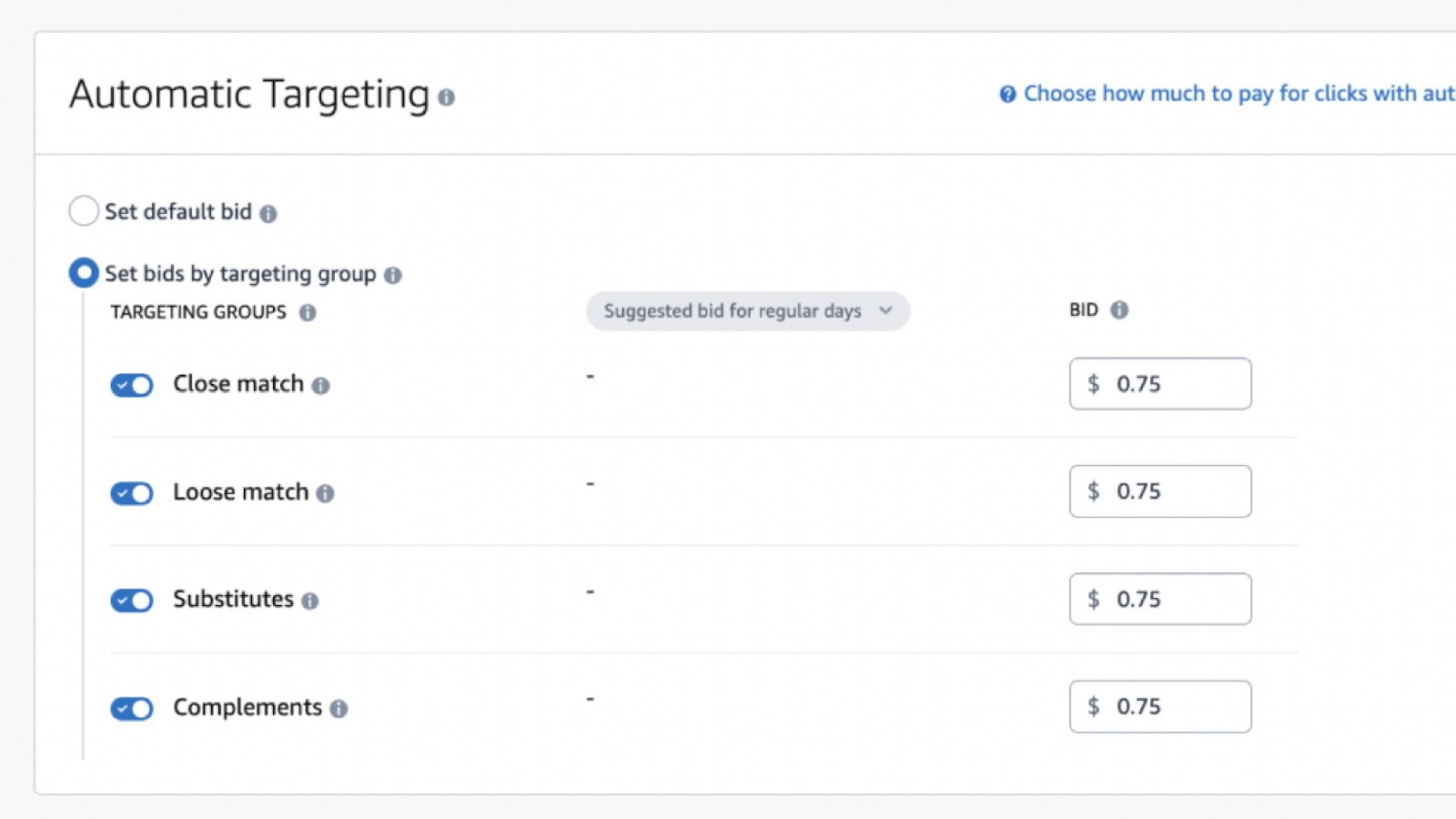
In order to optimize the impact of your targeted advertising campaigns, it’s essential to customize your bidding strategies and ad placements. In addition, monitoring and adjusting your bidding strategies based on each language and region’s performance and competition level is crucial for efficient budget allocation.
Analyze key metrics such as click-through rates, conversion rates, and return on ad spend (ROAS) for each language and region. Allocate more budget or adjust your bidding strategies to prioritize campaigns delivering the best results. Consider increasing bids for languages or regions with higher conversion rates or lower competition to maximize your advertising impact.
Additionally, leverage the various ad placements available on Amazon to reach your target audience effectively. Sponsored product ads, display ads, and video ads can be strategically used to engage customers based on their browsing and shopping behavior. Customize ad placements based on the preferences and habits of your target audience in each language and region.
Introducing MarginBusiness: Your Trusted Partner for Amazon Listing Localization & Translation Services
When expanding your business on Amazon, reaching customers in different languages, partnering with the right experts can make all the difference. That’s where MarginBusiness comes in. 🏆
As a trusted provider of listing localization & translation services, MarginBusiness offers a team of experienced translators & localizers specialized in adapting Amazon listings for diverse markets.
So whether you need accurate translations into any language, cultural adaptation to resonate with your target audience or optimization for search engines, MarginBusiness has you covered.
With a focus on expertise, quality, speed, and also affordability, they are the partner for businesses of all sizes aiming to sell on Amazon in multiple languages. Experience the power of effective localization and translation with MarginBusiness therefore unlock new growth opportunities for your Amazon business.
Conclusion
Expanding your Amazon advertising efforts to different languages certainly strategic move that can unlock immense growth potential for your business.
By implementing the strategies outlined in this blog post, such as conducting in-depth market research, leveraging language-specific tools and resources, optimizing product listings for language-specific SEO, and implementing targeted advertising campaigns, you can effectively tap into new markets and connect with a broader audience.
Remember, the key to success lies in understanding your target audience’s cultural nuances, preferences, and behaviors and tailoring your approach accordingly. Then, with the right tools, resources, and strategies, you can position your products for success in different language markets and drive meaningful results.
In order to stay updated on the latest tips, strategies, and insights for optimizing your Amazon advertising in multiple languages, subscribe to Eva’s Newsletter. So join thousands of other savvy Amazon sellers who receive exclusive content and actionable advice that can help propel your business forward. 🚀

